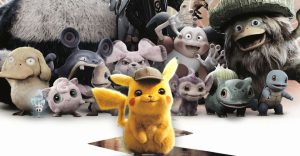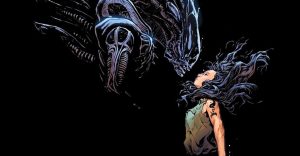How Many Dragon Balls Are There in The Original Manga?

Since Akira Toriyama’s Dragon Ball made its debut in the manga anthology magazine Weekly Shōnen Jump in 1984, the sprawling tale of Son Goku, and his quest to collect the seven — yes, seven — Dragon Balls in order to summon a wish-fulfilling dragon has continued in sequel manga, Dragon Ball Z, and now Dragon Ball Super. And while many new Dragon Balls and dragons have appeared, they always seem to come in sets of seven. And for good reason.
Toriyama initially conceived Dragon Ball as a contemporary spin on the classic 16th Century Chinese novel Journey To The West attributed to Wu Cheng’en, based on the 7th Century travels of Buddhist monk Xuanxing. The story famously centers on the mythical Monkey King, Sun Wukong, whose name in Japanese is translated to Son Goku, the same as the Saiyan protagonist of Dragon Ball. Many other references of Chinese and Japanese literature and folklore appear in the long-running manga, and it is here we might find the origins of the number seven.
In a 1987 interview with the magazine Weekly Shōnen Jump itself in service of a special promotional issue entitled Dragon Ball: Bouken Special, Toriyama revealed that the number ‘7’ was chosen due to the inspiration of the 19th Century Japanese fantasy epic, or gesaku (meaning light entertainment or satire) Nansō Satomi Hakkenden, or “The Chronicles of the Eight Dog [Samurai] of the Satomi Clan” by Kyokutei (or Takizawa) Bakin. This fanciful, and also incredibly violent story involves eight prayer beads which magically disperse throughout the province in order to mark the future eight heroes who will save the Satomi clan. According to Toriyama, he liked the image, and changed it to seven so as not to be the exact same.

These origins become slightly more disturbing upon perusing the literary incident: the suicide of the mother of the eight dog men. Bakin liked incorporating traditional Shinto myth into his historical settings, and the result is often somewhat grotesque by modern standards. The lord of the Satomi clan, Yoshizane Satomi, is under siege from a neighboring clan, and so jokingly offers his dog the hand of his daughter, Princess Fuse, in marriage if he can bring him the head of his enemy. The dog then does this and reveals himself to be a god, Yatsufusa, claims his bride and whisks Princess Fuse away. Presented as a pinnacle of morality, the princess reads to him from the sutras, and the two never consummate their marriage. However, she later finds herself pregnant, and commits suicide in ritual seppuku-style to prove her honor and chastity.
Upon her act, eight mystical crystal balls of energy emerge from her womb, and disperse across the province. Later, 8 boys are born, each with a prayer bead inscribed with a kanji or word, alluding to a Buddhist principle. The 8 brothers then band together in an incredibly violent tale of war, betrayal and murder, ultimately winning out and bringing peace to the land. Maybe these brutal origins involving death and suicide is why Toriyama mostly uses them to wish people back to life in his brighter, more cheery tale. Interestingly, though the characters in the story are not literal dog-men, there is at the very least a similarity in the subject matter of Teenage Mutant Ninja Turtles to this as well.

That isn’t to say that the number 7 might not also have significance to Toriyama. The number 7 is very important in Buddhism (a major religion in Japan) often associated with the ascent to nirvana such as the Seven Factors of Awakening which bring about enlightenment (awareness, inquisitiveness, vigor, ecstasy, tranquility, focus and temperance). Goku’s quest to defeat ever greater threats to mankind and life in the universe through becoming the greatest warrior of all time might in some ways be seen as akin to seeking enlightenment.
The Dragon Balls themselves have been used for less enlightening purposes. The first goal Toriyama had his protagonists set out to find them for was deuteragonist Bulma searching for a perfect boyfriend, which was later changed by other members of the party to a pair of girl’s underwear during the actual wishing. (Don’t worry, it was to stop the end of the world). Throughout the many sagas of Dragon Ball, one thing Toriyama has always carried is a jocular tone in his stories, perhaps a spark of the irreverence of the traditional myths and stories he draws from.
Source: Weekly Shōnen Jump via Kanzenshuu.com
About The Author


















